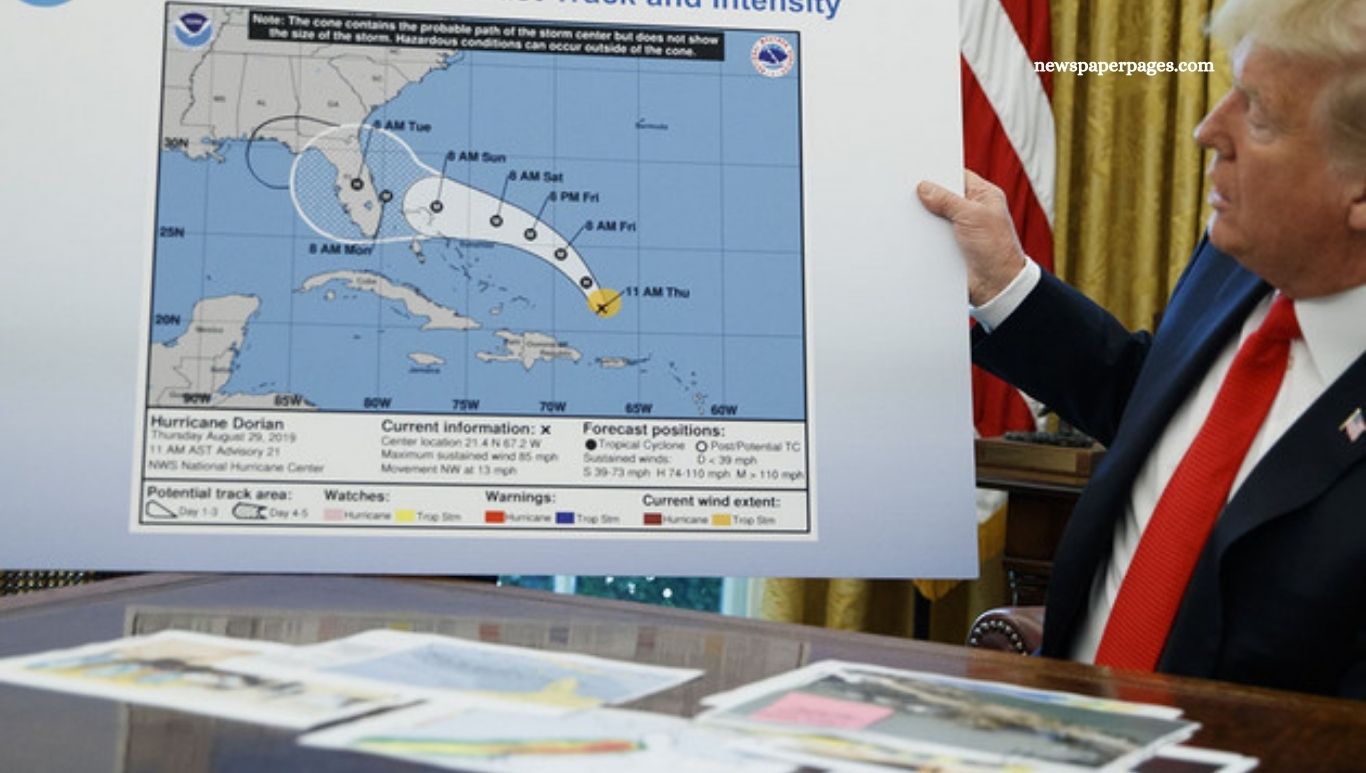President Donald Trump’s recent interaction with Canadian Prime Minister Mark Carney over making Canada the “51st state” highlights a unique aspect of his foreign policy: his compulsive fixation on altering the world map. This seemingly eccentric inclination is more than just a quirky personal trait; it reveals how Trump’s real estate-driven mindset shapes his approach to diplomacy, leading to geopolitical tensions, media disputes, and global confusion.
The Origins of Trump’s Cartographical Fixation
Trump’s obsession with maps is deeply rooted in his career as a real estate developer, where acquiring land and branding territories for profit played a central role. His comments to Prime Minister Carney during an Oval Office meeting underline his perspective on political borders as fluid, similar to the lines on a real estate blueprint. “I’m a real estate developer at heart,” he remarked, suggesting that the boundary between Canada and the United States should be redrawn.
This notion is not new. Trump has voiced his desire to incorporate territories like Greenland into the United States, calling it a “massive” landmass ripe for acquisition. His claims to want the U.S. to “get” Greenland and make Canada part of the union stem from his belief in the strategic, economic, and aesthetic value of these territories. These ideas, however, have provoked strong reactions internationally.
Read More: Pope Leo XIV’s Childhood Home Near Chicago Delisted After Surge of Interest
Geopolitical Consequences: Naming and Claiming Territories
Trump’s desire to alter global maps isn’t merely theoretical. It has led to significant diplomatic clashes. The discussion around changing the name of the Persian Gulf to the “Gulf of Arabia,” for example, has ignited fury in Iran, with its foreign minister threatening retaliatory measures. Similarly, proposals like renaming the Gulf of Mexico to the “Gulf of America” sparked a backlash from Mexico and even led to legal threats.
Maps, as Karl Offen, a geography professor at Syracuse University, notes, have always been intertwined with political power. “To name is to claim,” he asserts. By altering geographical labels, Trump seeks to assert control over regions—an extension of his expansionist tendencies, which he frames in terms of real estate development. His references to territories such as Gaza as “oceanfront property” further underscore this perspective.
Trump’s Cartographical Rhetoric: A Tool for Political Messaging
Maps have been central to Trump’s political branding throughout his presidency. During both terms, he regularly showcased county-by-county electoral maps that exaggerated his victories, casting the country in a sea of red. Though these maps fail to represent population distribution accurately, they serve to amplify his political image. This map-driven narrative also informs his foreign policy, where the renaming of bodies of water and territories is not just a symbolic gesture but part of a broader strategy to bolster national interests.
The Global Backlash and Domestic Confusion
Trump’s bold remarks have sparked protests and diplomatic fallout. Greenland’s prime minister recently rebuffed Trump’s acquisition proposals, and Canadian officials have also voiced strong objections. The situation grew particularly tense when the White House blocked certain media outlets, such as the Associated Press, from covering events related to the naming dispute, raising concerns about press freedom and transparency.
Despite the global backlash, Trump’s press secretary defended his president’s actions, claiming that the administration has a “deep appreciation for geography and history.” However, this rhetoric also points to a larger question: Is this cartographical fixation an attempt to assert America’s global dominance through geopolitical maneuvers, or merely an extension of Trump’s personal branding tactics?
Trump’s Foreign Policy: Merging Real Estate with Geopolitics
Trump’s fixation with acquiring territories and altering maps can be viewed through the lens of real estate development. His interest in Greenland, Canada, and other regions like the Panama Canal reflect his tendency to see countries and territories not just as geopolitical entities, but as valuable assets to be bought, sold, or merged.
Frequently Asked Questions
What is Trump’s view on Canada and Greenland?
Trump has expressed a desire to incorporate Canada as the “51st state” and acquire Greenland, referring to them as valuable assets for the U.S.
Why does Trump focus on renaming geographical landmarks?
Renaming bodies of water and territories is part of Trump’s broader strategy to assert American dominance and reshape the global geopolitical landscape.
How has the international community reacted to Trump’s territorial ambitions?
Reactions have been largely negative, with countries like Canada, Greenland, and Iran strongly opposing his proposals.
What are the political implications of altering maps?
Altering maps can symbolize territorial claims and shifts in power, which often lead to tensions between countries and can affect international diplomacy.
How does Trump use maps in his political messaging?
Trump frequently uses maps to reinforce his political image, often displaying exaggerated victories in electoral maps to bolster his legitimacy.
What’s the significance of Trump’s “Gulf of America” proposal?
The name change could alter the historical identity of the Gulf of Mexico and provoke political and diplomatic reactions, particularly from Mexico.
What does Trump’s real estate background have to do with his foreign policy?
Trump’s background as a real estate developer influences his view of nations and territories as valuable assets, which he seeks to control, acquire, or merge.
Has Trump faced any legal challenges over his cartographical ideas?
Yes, the naming disputes, such as the “Gulf of America,” have led to media restrictions and even legal threats from other countries.
Why is Trump interested in the Arctic region?
Trump sees the Arctic as a strategic area due to its resources and new trade routes opened by melting ice, which may benefit U.S. interests.
How have Trump’s actions influenced global diplomacy?
Trump’s cartographical proposals have led to diplomatic tensions, with countries like Iran and Mexico expressing concerns over perceived U.S. territorial expansionism.
Conclusion
Donald Trump’s fixation on maps and territory reveals a deeper, strategic layer to his foreign policy. His desire to “rename” and “claim” regions is not just about geography; it is about power, influence, and the American brand. However, as evidenced by global backlash and internal conflicts, this approach raises important questions about sovereignty, diplomacy, and the role of the United States on the world stage.
Whether it’s the Gulf of Mexico or Greenland, Trump’s maps are far more than just political statements—they are a reflection of his real estate-driven worldview that continues to shape his administration’s approach to foreign policy.

